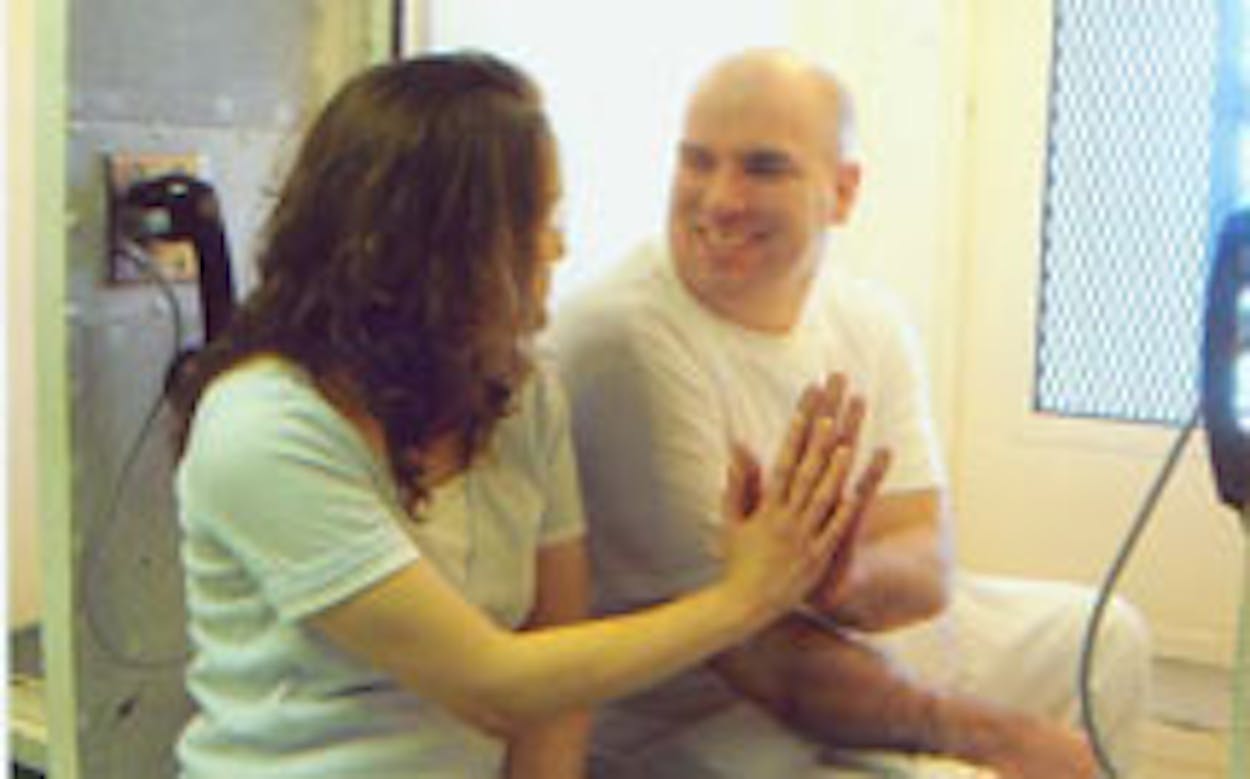UPDATE: July 29,2011
Larry Swearingen just got his second execution stay in two-and-a-half years—this time from the hardline CCA, not noted for coddling convicted murderers. Swearingen’s lawyers recently filed a supplement to his sixth writ of habeas corpus (most likely some kind of record in itself), which, like most of previous writs, made a big deal of all this new fancy-pants science, which says that he couldn’t have committed the murder of Melissa Trotter. This time Swearingen has on his side “high-powered, high-resolution microscroscopic technology” that was previously unavailable. There’s more about Swearingen’s case below and in an article I wrote in January 2009.
Just when you thought no one cared about the death penalty anymore, well, people started caring about the death penalty again—at least as far as presidential politics go. Last week a lot of people were wondering if Gov. Rick Perry’s treatment of the Cameron Todd Willingham case, both before and after Willingham was executed, would affect his chances in a national election. That case, of course, involved the science of fire. Soon Perry could get another chance to act on a death penalty case that involves science, this time the science of a decomposing body. How soon? Larry Swearingen is set to be executed August 18.
I’ve written about Swearingen before, in January 2009, as he approached his second execution date. It was stayed by the Fifth Circuit Court of Appeals a day before he was to be strapped to the gurney. Swearingen’s main claim, as I wrote then, was that “six different physicians and scientists–forensic pathologists and entomologists—say there’s almost no way Swearingen could have done it”—that is, killed Melissa Trotter in 1998 in Montgomery County. The court allowed Swearingen’s lawyers a chance to file another federal writ of habeas corpus, but in November the court dismissed the petition, writing that there was plenty of other circumstantial evidence tying him to the murder, that all this science could have and should have been brought up at his trial, and that the scientists’ hypotheses are all inconsistent and contradictory anyway. Swearingen appealed but in April of this year the court upheld its dismissal.
So, on June 24, Montgomery County judge Fred Edwards gave Swearingen a new death date, his third (the first was in 2007). Even an optimist would say that Swearingen’s options are narrowing. On the state side, he has filed a remarkable sixth writ of habeas corpus with the Texas Court of Criminal Appeals, which last turned him down in February 2010. This writ, though, has four additional scientists weighing in in Swearingen’s favor, giving him a total of ten who say he couldn’t have killed Trotter. On the federal side, Swearingen is mostly played out, though he will appeal to the US Supreme Court as a last resort.
The other last resorts are the Board of Pardons and Paroles (which almost never grants clemency) and the governor of the state of Texas, a man who seems poised to make a run to be the president of the United States. Perry thumbed his nose at modern arson science in the Willingham case. How will he approach modern forensic entomology, to say nothing of anatomy, histology, or forensic anthropology? “The difference is that the Willingham case involved bad forensics,” says Swearingen’s appellate attorney James Rytting. “In this case we have fantastic science, from multiple areas. All of it converges at the place where Swearingen is excluded from the universe of possible culprits. He’s innocent.”









